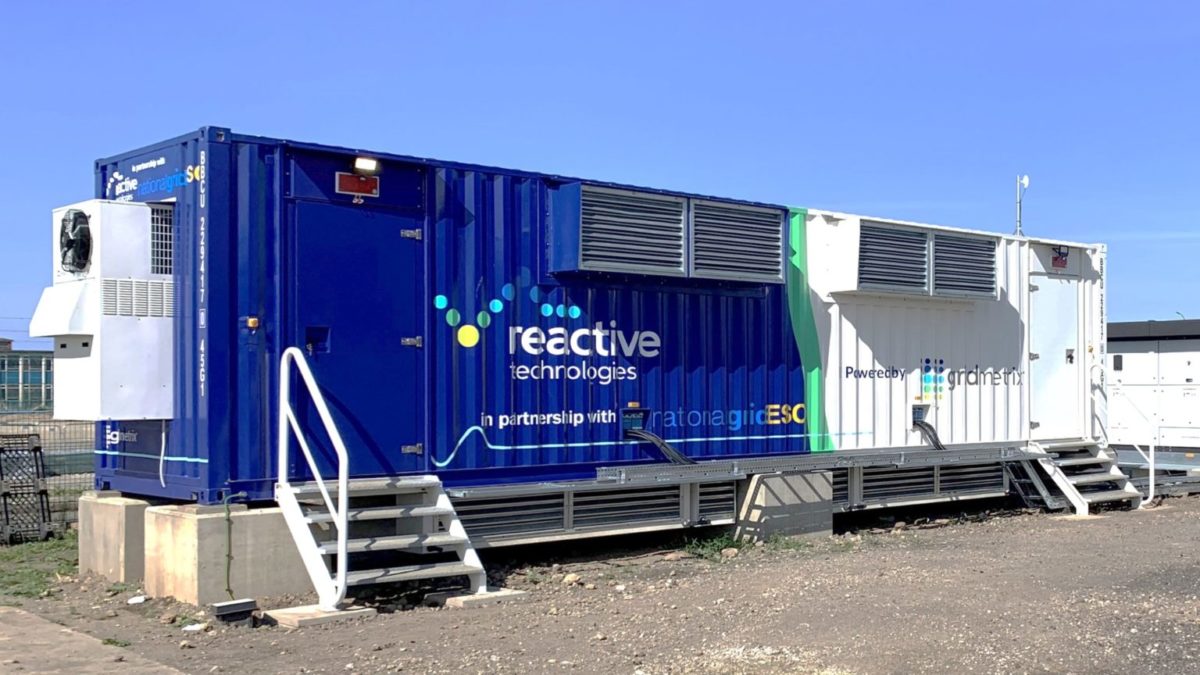From pv magazine USA
Reactive Technologies is expanding into the United States, and has recently won recognition from BloombergNEF as one of its 2022 Pioneers. In late 2021, it connected their first unit to the UK grid. The company describes its technology as “sonar for the power grid”.
Reactive starts by installing a shipping container full of gear that sits behind an ultracapacitor. This grid-connected unit injects small, specific, bursts of energy – signals one might call them – into the power grid. The company listens to how the signals are distorted using in-house designed “measurement units” strategically located on the grid.
The company’s GridMetrix software suite then collects the distortion data and calculates the power grid’s system inertia, as well as other parameters. This information is then delivered to the grid operator’s management platforms so they can more discretely deploy grid supporting resources, and avoid turning on an entire coal plant to service a “tiny wobble” that could be fixed with a much smaller and faster battery.
The company connected their first unit to the grid in the United Kingdom to support National Grid in October 2021. In general, National Grid has been active in the budding “green inertia” space.
Grid stability is becoming a greater concern for operators in many markets as we transition into this brave new world. Recent events in California and Texas, which affected solar power generation heavily, bring this topic into even greater focus.
Solar-plus-storage has been running large off-grid solar power projects for decades, providing ample evidence that full size power grids could be run by the same technology.
Sonnen first made whole communities capable of going off-grid more than a decade ago in Europe, and in the United States since 2017. First Solar also proved its ability to provide grid-forming services from modules in 2017. With ongoing inverter research, the full suite of solar gear (modules, inverters, and batteries) will be ready to run the grid very soon.
AEMO, the manager of Australia’s heavily renewable energy power grid, is investing significant time into solar inverters and batteries doing this work. The Philippines recently installed its first grid stability battery.
Keeping close to what we already understand, four “synchronous condensers” were installed on Australia’s grid, allowing for more than 1 GW of wind and solar to and avoid frequent curtailment, and to be almost fully utilized. These were the first units installed in the very advanced Australian renewables market.
Synchronous condensers are very large metal flywheels that spin at 50 or 60 revolutions per second, stabilizing the electromagnetic fields of the grid. These units are powered by electricity, rather than the steam from burning gas or coal. The hardware has been around for many decades, but is not needed on fossil heavy grids, since fossil generators already have spinning resources built in.
The large infrastructure investment company, Quinbrook, recently installed the first synchronous condenser in the UK. Additional units will be deployed at three more UK sites this summer.
This copy was amended on 04/05/22 to indicate synchronous condensers are flywheels that spin at 50 or 60 revolutions per second, not per minute, as previously stated.
This content is protected by copyright and may not be reused. If you want to cooperate with us and would like to reuse some of our content, please contact: editors@pv-magazine.com.



I think you mean 50 to 60 revs per second, not minute?
Good spot Keith. Our correspondent is happy to hold his hands up on that one. Thanks for keeping us on our toes!